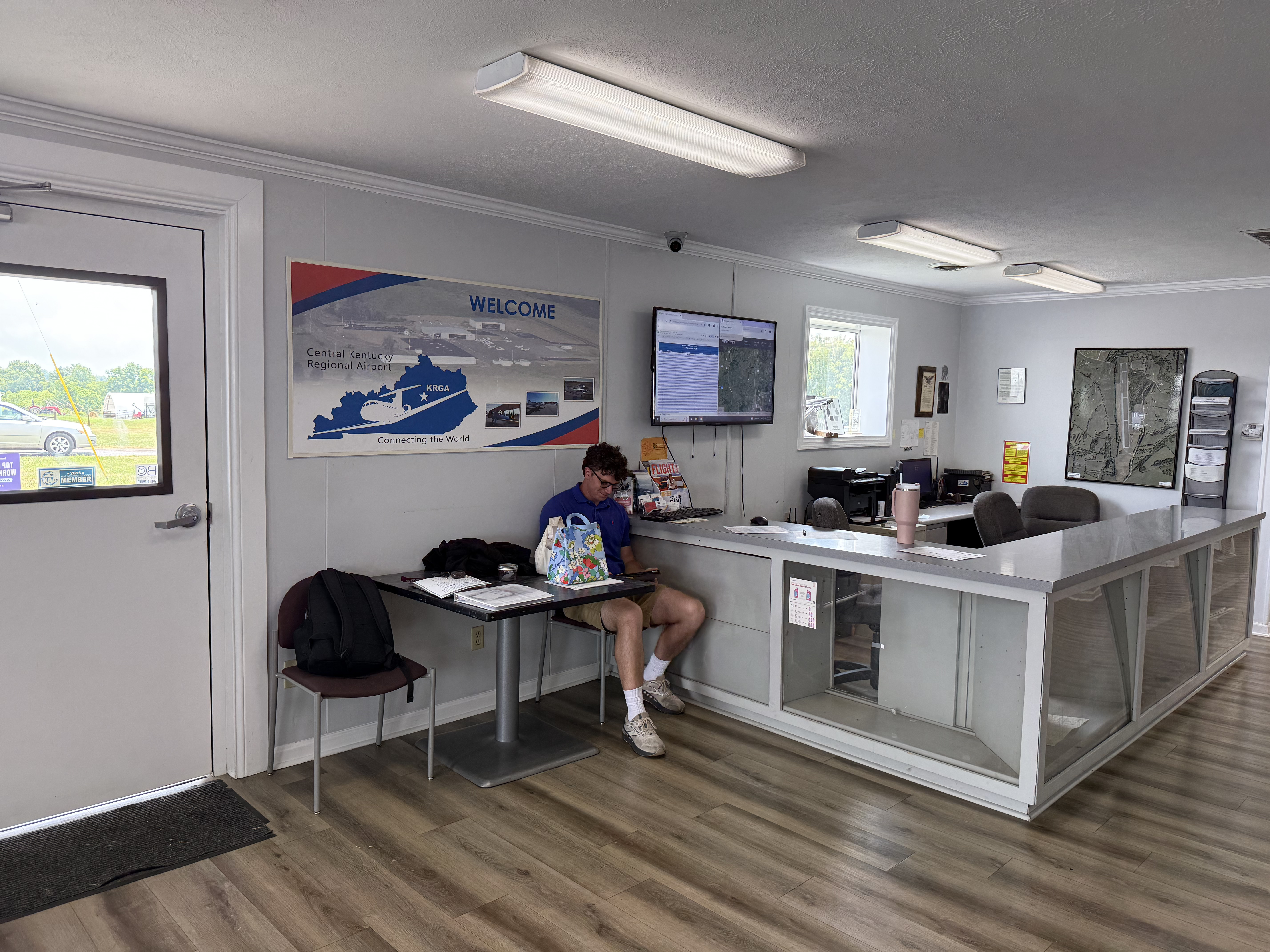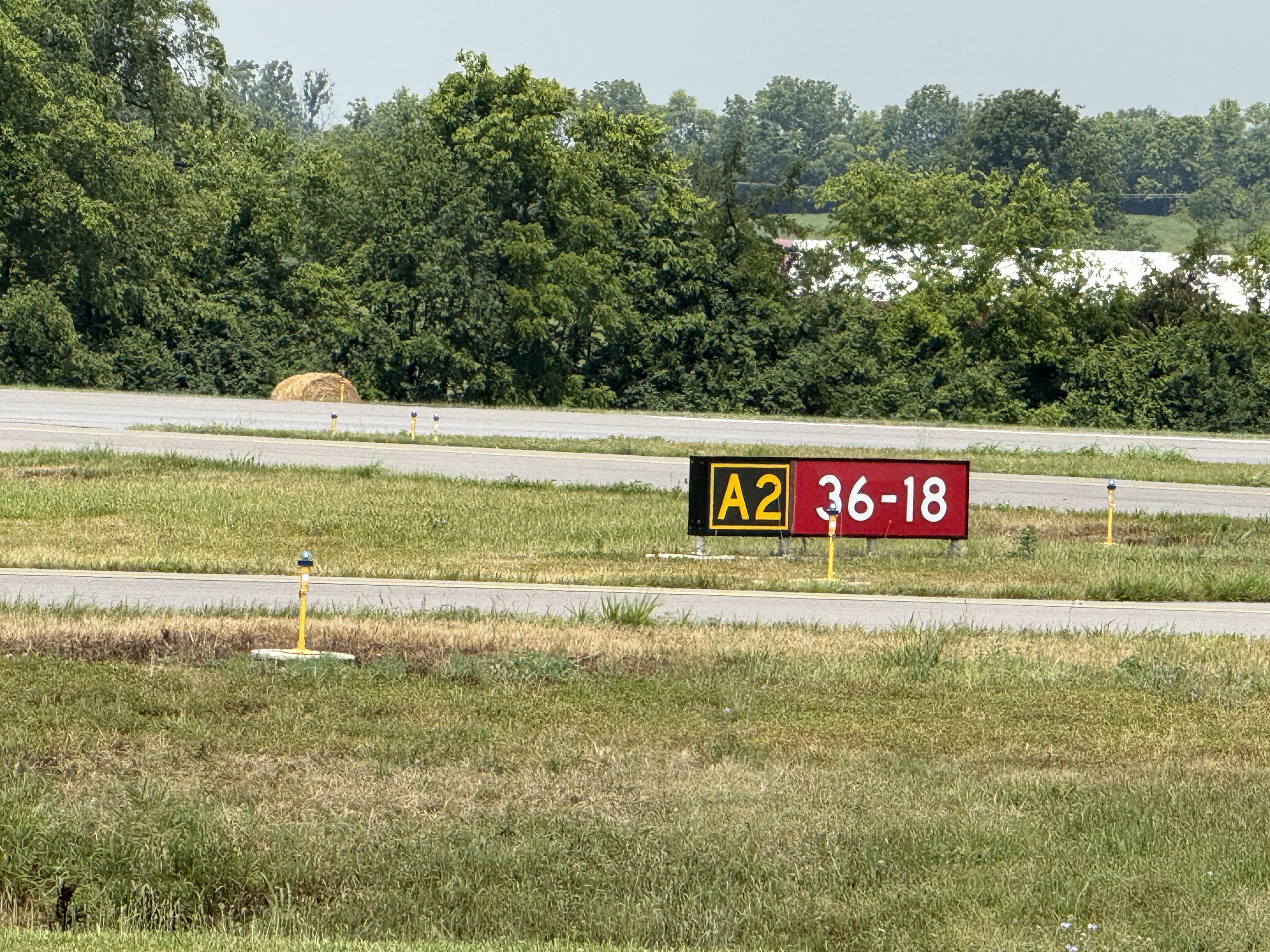Madison County regional airport has Frankfort's attention
In partnership with EKU, the facility is seen as key to local--and statewide--economic development


RICHMOND—Recent state and federal multi-million dollar investments in Madison County’s regional airport signal the facility’s growing importance to both local and Commonwealth economies, according to some officials.
Home to EKU’s School of Aviation, and located near a site set to become a regional industrial park, the Central Kentucky Regional Airport is on the Beshear administration’s radar, so to speak.
“It’s important to us,” state aviation commissioner, Mark Carter, told The Edge in a phone interview. “I mean, we answer the phone when they call.”
The airport, funded equally by Richmond, Berea, Madison County, and EKU, is located in the Southwestern part of the county between John Ballard and Peggy Flats roads. It has seen air traffic steadily increase since 2008 when EKU moved its flight school operations from the Mount Sterling regional airport in Montgomery County, to the airport closer to home.
Since then, the number of flight operations managed by the airport have steadily increased. “A large portion of those are from EKU,” airport manager, Jason Bonham, told The Edge in a sit-down interview. “There are as many as 75 student pilot flights per day.”
Exact statistics on those operations are not available for the years prior to the installation of state-funded airport operations management software in 2021, but Bonham said that flights at the airport prior to then were averaging anywhere between 20,000 and 30,000 annually.
With the software, Bonham has tracked the airport’s steady growth in flight operations, from 46,000 flights in 2022 to 48,000 flights in 2023, to last year’s 55,000 flight operations.
All told, according to the commissioner, that’s among the highest number of flights at any of the state’s 53 general aviation airports, second only to Bowman Field, a general aviation airport in Louisville with several flight schools on its campus, helping push the total number of flight operations to about 102,000 per year.
Need for specialized workforce
The Madison County airport’s impact on the local economy in 2024 was nearly 13 million dollars, according to a Kentucky Department of Aviation report. Local taxes paid by the airport were nearly two-hundred thousand dollars, the report said.
Across the Commonwealth, the aviation industry contributes nearly 20 billion dollars annually to the economy, according to a 2023 report by the American Institute of Aeronautics and Astronautics.
Aviation-related products and services are the state’s leading export category, infusing Kentucky’s economy with more than 17 billion dollars annually, according to the Institute’s report. By comparison, the Kentucky Distillers’ Association reported in 2024 that its industry contributed 9 billion dollars to the state’s economy that year. Horse racing, according to a state report, contributes 6.5 billion dollars annually.
But as the number of jobs created in aviation, avionics, aerospace logistics and air freight continue to rise, so does the pressure on state and local leaders to create a skilled workforce.
“EKU is delivering on this need, with trained pilots and aerospace managers to support our aviation industry—Kentucky’s number one export,” Governor Beshear said last November during a groundbreaking ceremony for a new EKU School of Aviation training facility being built at the airport.

University flight program
EKU’s status as the only university in the state to offer a four-year academic aviation training program, has helped attract millions of dollars to be spent on improving and expanding the airport.
Last year, the state’s General Assembly gave the School of Aviation, founded in 1983, 25 million dollars for the training center. The new facility will replace two double-wide trailers near the runway of the airport where classes are currently held, and will include hangars for the school’s 30 aircraft, now parked on the ramp before the runway. The project is set for completion in 2027.
“We’ve also had seven million dollars invested in the airport in the past five or six years,” Tim Ross, PhD, the aviation program’s senior executive director, told The Edge in a sit-down interview. “That’s federal funding, and some state money.”
These investments have been applied to a runway overlay, an improved taxiway, an apron expansion, an LED lighting project, and two new hangars for private pilots to store their aircraft, according to Ross.
“It’s important EKU has good facilities,” Carter said in the interview. “It’s my personal opinion that that ought to be a priority for both the FAA [Federal Aviation Administration] and the Commonwealth.”
High wage jobs
In addition to training pilots, EKU’s program also graduates drone operators, airplane and helicopter mechanics, and a range of other aviation-related professionals.
“These are all good paying careers,” Ross said. “Plus, you often get a bonus when you sign on, and that helps with paying off your tuition.”
“A Delta airlines captain can make three-hundred thousand plus a year. Mechanics can make over $100,000 a year working for UPS or FedEx,” Carter said.
One of the reason wages in this industry are so good is that the supply is much less than the demand, according to Carter, who referenced a Boeing report issued to investors last July. Boeing claims that the next two decades will see a global pilot shortage of 674,000. Additionally, the world will need 716,000 maintenance technicians and 980,000 cabin crew members, according to Boeing.
Ross said the shortage is due in part to the military scaling back its flight programs, and so needing to train less pilots, and to commercial pilots aging out of their jobs.
A decade ago, Ross said the school had up to 130 students in the aviation program. “This year, we’re gonna hit close to 500,” he said. “We’re going to have kids from as many as 30 states enrolled, from California to Maine.”
Bonham said that one of the attractions of the program is the value. “It’s less expensive than other programs,” he said.
Current yearly tuition at EKU for in-state residents is $11,280. For out-of-state residents is twice that at $22,190. Ross said for aviation students, however, there are additional costs for flight fees. “They can be as much as fifty or sixty-thousand dollars more over the course of four years,” he said.
Still, it’s less expensive than many other programs, according to Ross, making it attractive to future aviation professionals not in the military.
Public-private partnerships such as the ones EKU has with Allegiant Airlines, Republic Airways, and Piedmont Airlines, help graduates find work. More could be possible, according to Carter, if a bill intended to strengthen these kinds of relationships is passed by the General Assembly next year.
To date, Ross said EKU’s program has a one hundred percent job placement rate.

In-and-out access
Meanwhile, as the region has become the focus of industrial developers, the airport is also playing a role in attracting executives to locate their businesses here.
The FAA recently awarded the airport 3.5 million dollars to build a new terminal that will include conference rooms, a pilot’s lounge, and a concessions area, all with the intention of helping the region look more polished.
“The new flight training center at the airport is going to be transformational, offering an inviting front door for aviation, supporting the operations of nearby businesses, and contributing to this community’s continual expansion,” Beshear said during the groundbreaking.
Last year, Berea was chosen as the site of an interlocal agreement to build an industrial park to serve Madison, Scott, and Lafayette counties. Local leaders are counting on it to attract high-tech industries, including aviation.
Meanwhile, as Beshear has been hyping Kentucky’s infrastructure globally in an effort to attract more international manufacturing, while at the same time making more capital available for regional industrial parks, such as the one slated for Berea, Bonham said there has been an uptick in C-suite traffic to the airport.
“We have always had some of that traffic, but it was pretty inconsistent,” Bonham said. “I would say it started increasing and becoming steady over the last five to six years.”
“A lot of those folks want to get in, take a look, and get out,” Ross said.
To that end, Bonham said many companies are using the county’s airport as a base of operations when they come to Kentucky to view potential sites.
Carter said the airport itself can be an asset industrial executives consider, as it can help with flying in any replacement parts to ensure assembly lines are not thrown off.

Future control tower, and other developments
The increase in flight operations has the commissioner thinking it might be time to add a control tower to the facility, if the FAA agrees.
“It’s one of the busiest general aviation airports in the state, and EKU’s flight training program just by itself would lend itself to having a tower so it could be a training location for flight controllers,” Carter said.
The commissioner listed two future developments he said are thought by industry experts to be imminent, and which could soon impact Madison County’s airport.
The first is drone package delivery.
“UPS has been in development of a drone system to deliver packages, as has Amazon,” Carter said. “Regional airports will be important to that.”
The other is point-to-point travel service.
“A branded Uber picks you up, takes you to the Madison County airport. You then get on a manned- or unmanned drone that flies you to the airport in Lexington,” Carter said. “Then, you get on your commercial airline, and fly out to San Francisco, then when you land, you do the same process to get to your hotel.”
Carter said that these developments are closer than we think.
“We just need the infrastructure,’ he said.
Did you like this story? Please become a paid subscriber and help make stories like this possible. Thank you.
This story has been updated for misspelling for Mark Carter’s name. This piece was previously titled “Madison County regional airport has Frankfort’s ear.
